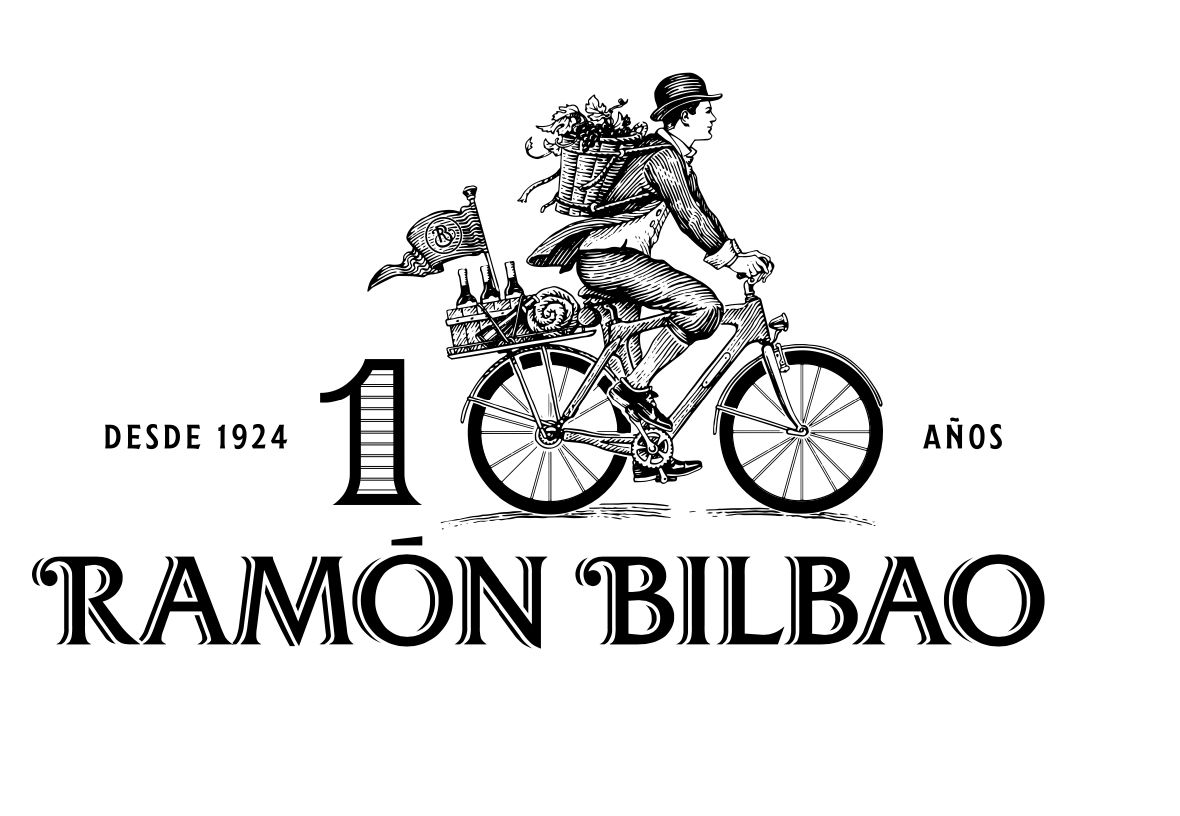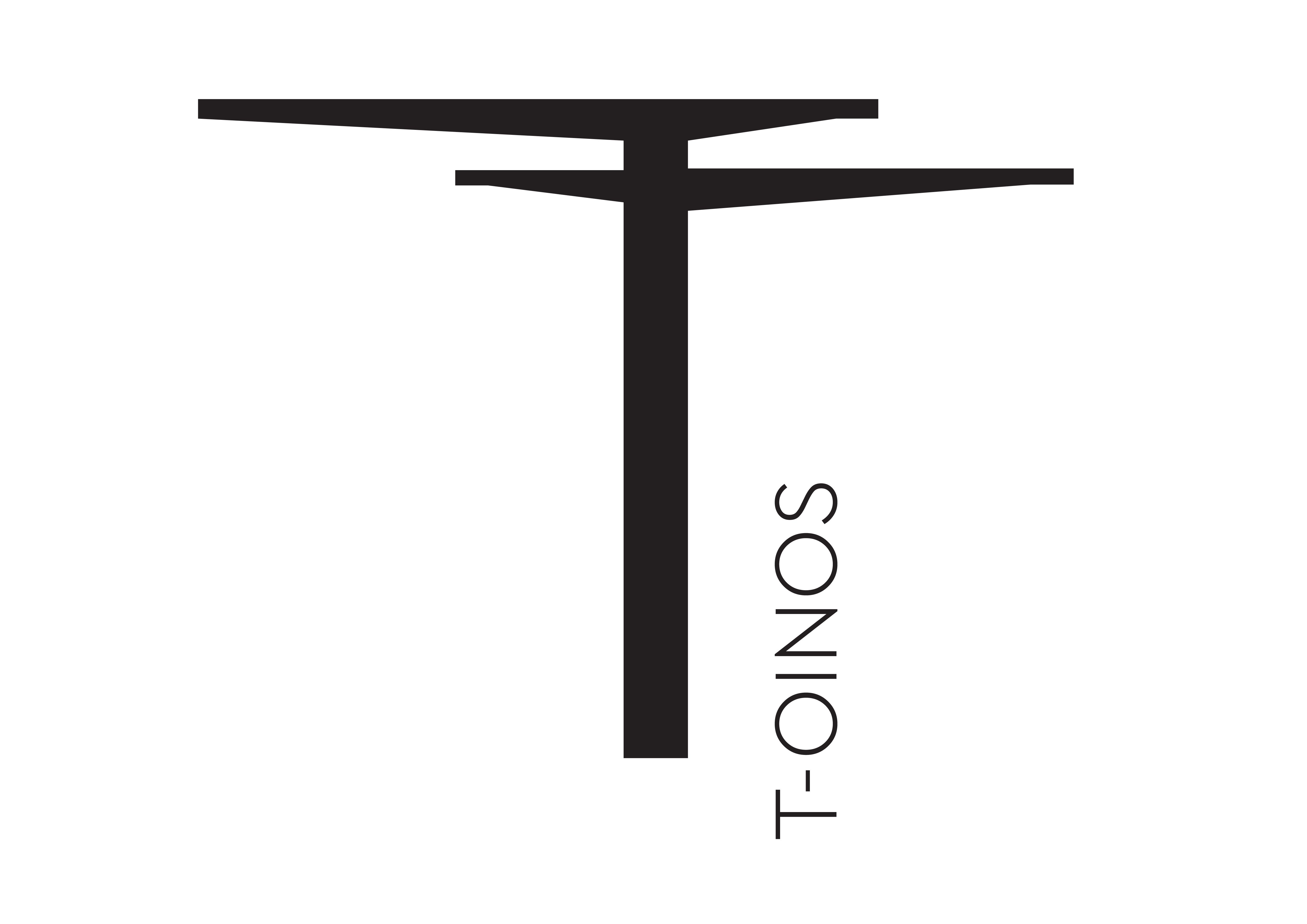What is immediately apparent with Beaujolais 2018 is just how varied the winemaking is becoming.
If Beaujolais was a rock band, then the arrival of the new 2018 vintage is like the release of Led Zeppelin 4, with the 2015, 2016 and 2017 vintages the equivalent of Led Zepps 1, 2 and 3 before it. In other words 2018 is the fourth stonking vintage in a row, different but still clearly from the same place as the other three, of the same peerless quality, with different elements turned up in the mix…. and it rocks.
Finally! Beaujolais has four great vintages in a row and there is quantity as well as quality.
“It’s everything you would want in a variety pack of a wine region,” wine expert Joe Wadsack said at the start of his masterclass, “2015 was just so delicious, 2017 fantastically concentrated and 2018 has less colour, is less complex but way more fruit.”
“There has never been a better time to get people into drinking Beaujolais.”
“It’s official Beaujolais is cool. I’ve waited all my life to say that. In fact it’s too cool… his friends (pointing to a cutting-edge sommelier in the audience) with their man buns and their way-too skinny jeans, they’re drinking a lot of Beaujolais these days.”
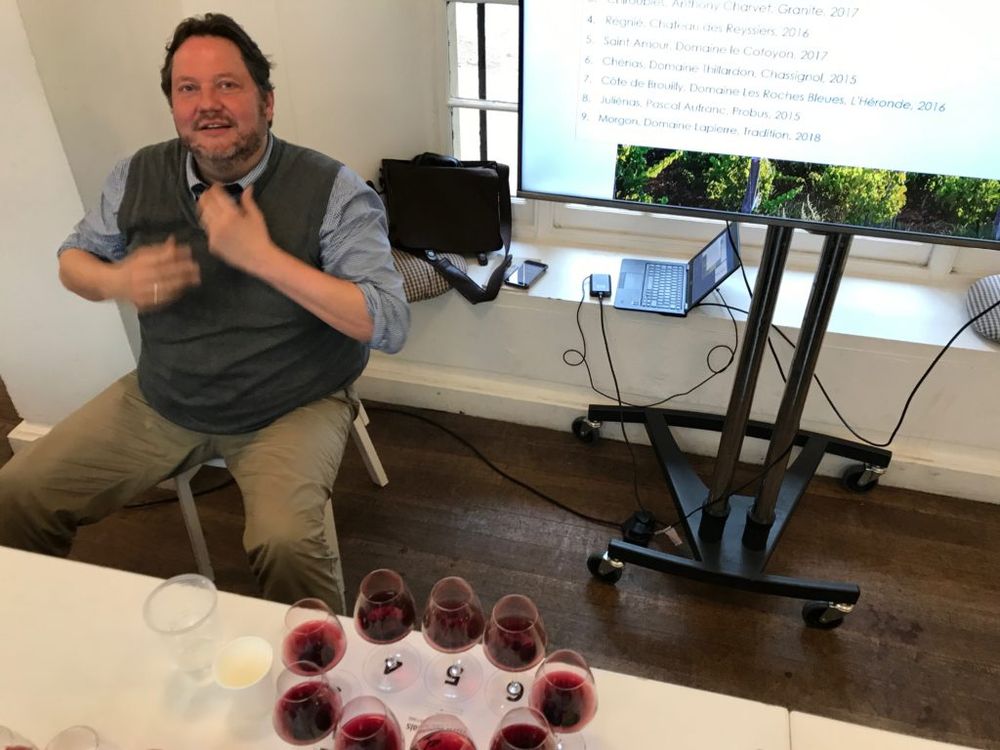
“Natural winemaking lends itself very well to wines of this minerality.” Joe Wadsack, June 10, 2019, ICA, London
Part of the reason, Wadsack believes, is that the micro-climate, the health of the vines, the soil, means that young winemakers can try tricky things with the wines of Beaujolais; this was much in evidence in the wines shown at the annual UK trade and press tasting to welcome in the 2018 harvest where the generic bubble gum, pasteurised flavours of the past were nowhere to be seen.
Instead there was a wonderful array of wines from Beaujolais 2018 at the entry and village level and many from 2015-18 from the crus that showed just how fast the region has been changing – in a good way.
The annual tasting event, held this year at London’s Institute of Contemporary Arts, began with an exploration of wine style diversity by Natasha Hughes MW in which she showed the wide variety of wines made by this undercurrent of young, driven, talented winemakers that are shaking everything up and making Beaujolais one of the most exciting wine regions right now on the planet.
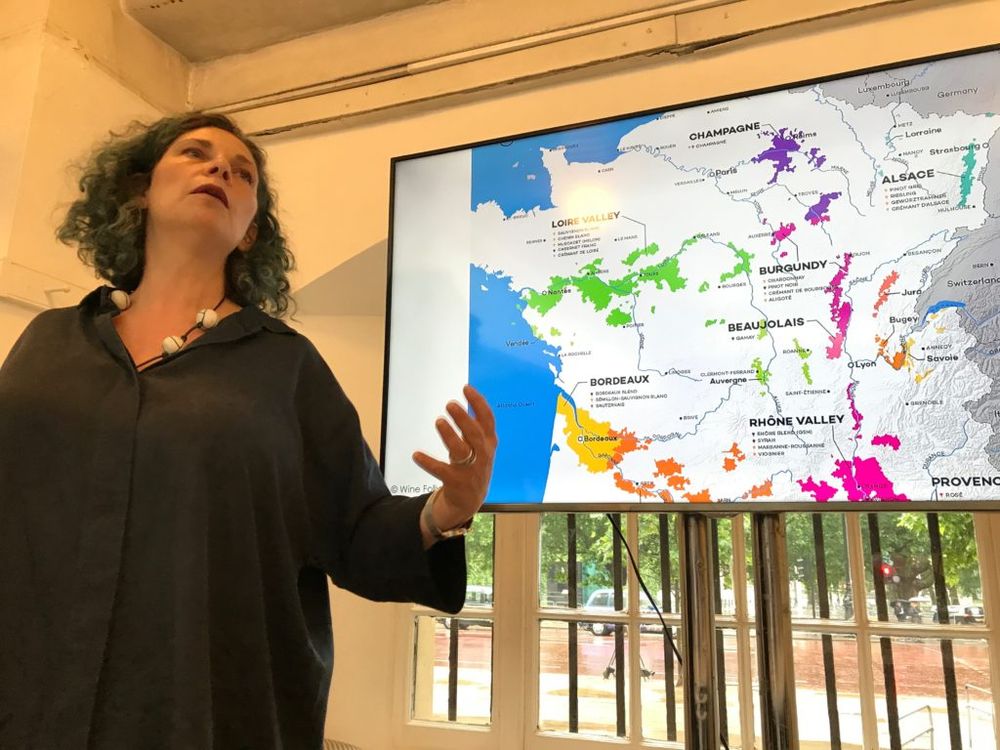
Getting a feel for the variety of winemaking styles: Natasha Hughes MW, June 10, 2019, ICA, London
During a trip there last October the winemakers I visited were largely young, could actually afford to buy vines, and had either inherited or adapted wineries or come from affiliated industries – Domaine Chapel, to give one example, where he was a chef and she was a New York sommelier… and together they’re making blinding wine.
“One of the exciting things is that Beaujolais is very old and very new at the same time,” Wadsack said.
Two points made from this observation are that the vines are very old in Beaujolais – of the nine wines tasted during Wadsack’s masterclass, the wine coming from the youngest vines were from 40 year-old plants.
“These are older than many of the vines in most New World countries and yet it’s the youngest here – everyone’s got old vines in Beaujolais,” Wadsack added.
The other observation is that there is a long history of natural wine in Beaujolais – many of the winemakers are the third and fourth generation of ‘natural wine’ producers – so that winemakers like Foillard and Lapierre who are making some of the best wines around are being emulated by the younger generation “Finessing their wines to the style of these people who make natural wine or natural-adjacent.”
They have become on-trend not because they have changed but because the market has changed and now started following them.
“Natural winemaking lends itself very well to wines of this minerality.”
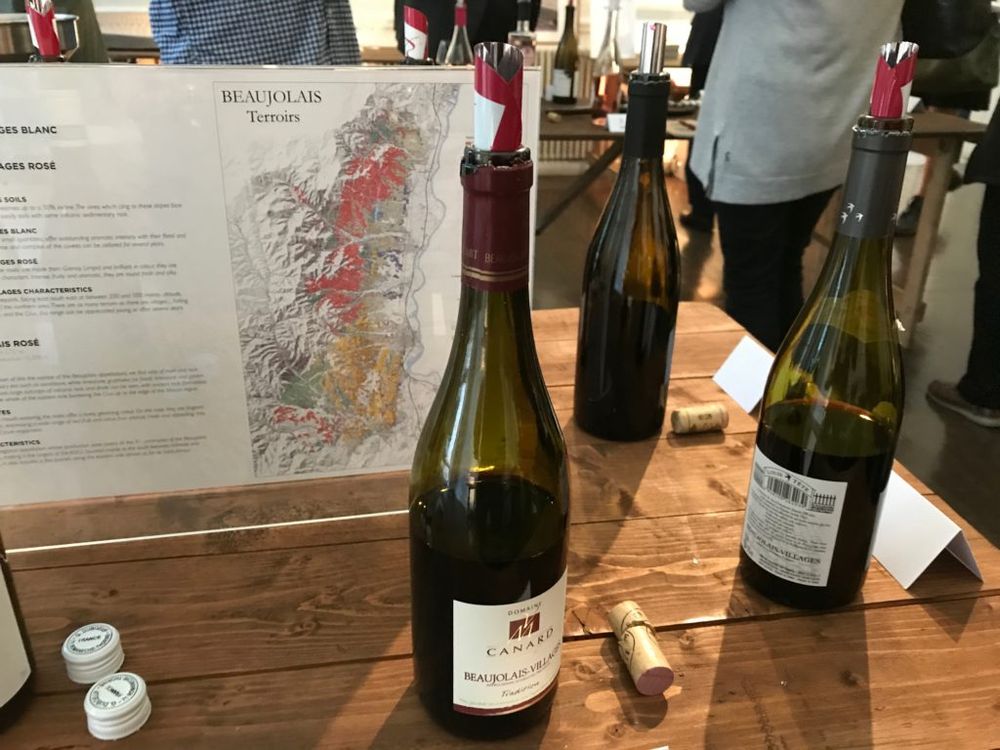
The tasting itself had been well signposted and spread out through the ICA
Wadsack said this with the caveat that he was only a recent convert to natural wine “but this,” he said holding up a glass of David Large’s Gamayhameha, one of the stars of the tasting, “doesn’t smell like a shire horse has backed into it.”
Wadsack’s tasting showed a range of wines to ‘Decode the terroirs of Beaujolais’ which, like Hughes’ had a range of winemaking styles – semi-carbonic maceration, barrel-aged – some were thin and ‘tight-lipped’ others plush and complex. But they were all unmistakenly from Beaujolais. In fact they couldn’t have come from any other place on earth.
10 highlights from Beaujolais 2018 – to try before you buy
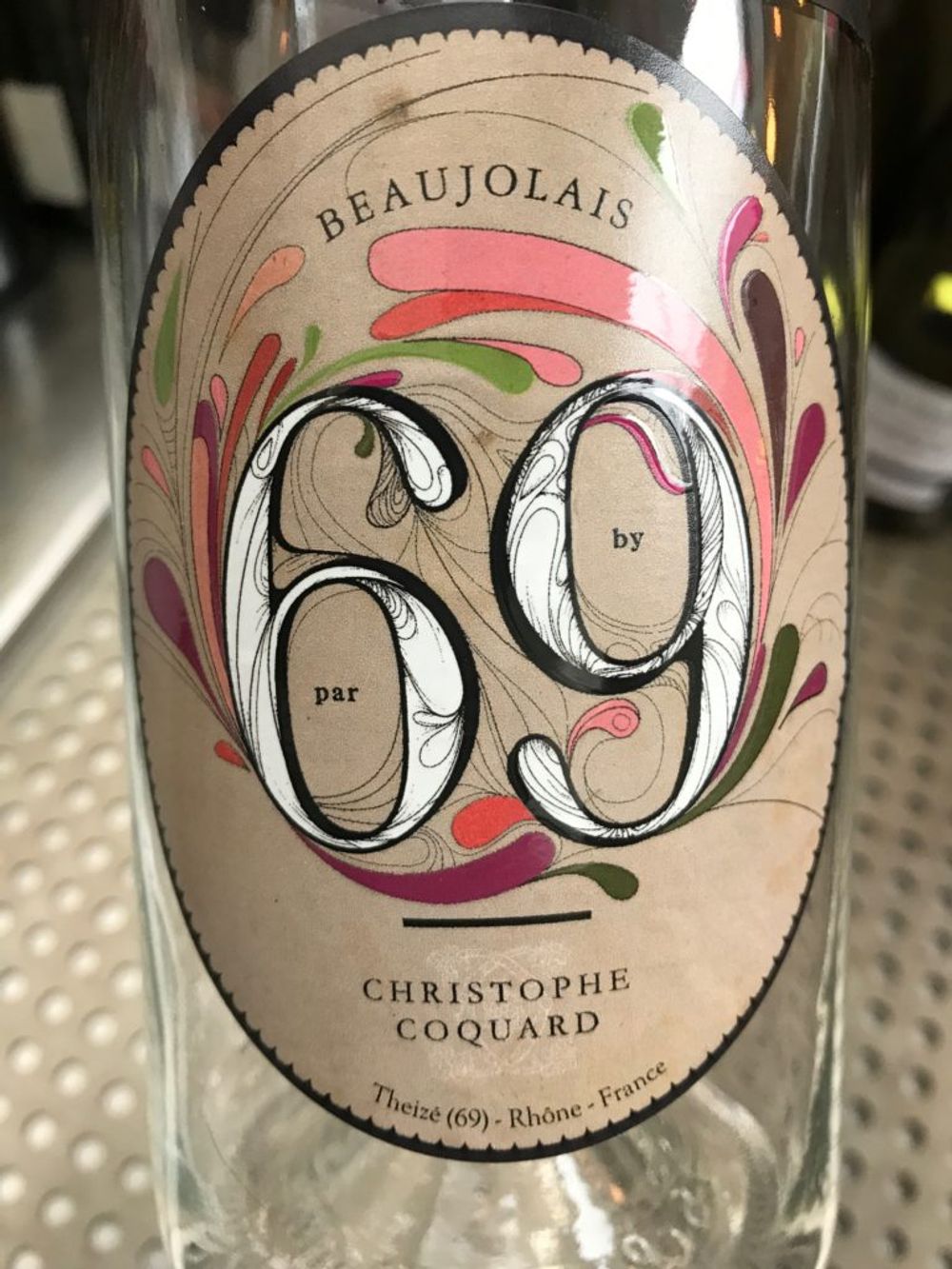
Cuvée 69, Beaujolais Villages Rosé, Maison Coquard, 2018
Beaujolais Villages Rosés are pretty few and far between – they were never released commercially and were only made for personal consumption. The wine body Inter Beaujolais made it a category in 2006 to cope with Japanese demand for Beaujolais Nouveau Rosé and it has stuck ever since. This is pale pink to onion skin; the nose is bright and inviting, the palate smooth and refreshing, great structure with lovely notes of yuzu lime and lemon grass. Seriously good. Where else could you get Rosé made from 40 year old gobelet-pruned vines? (Not in UK)
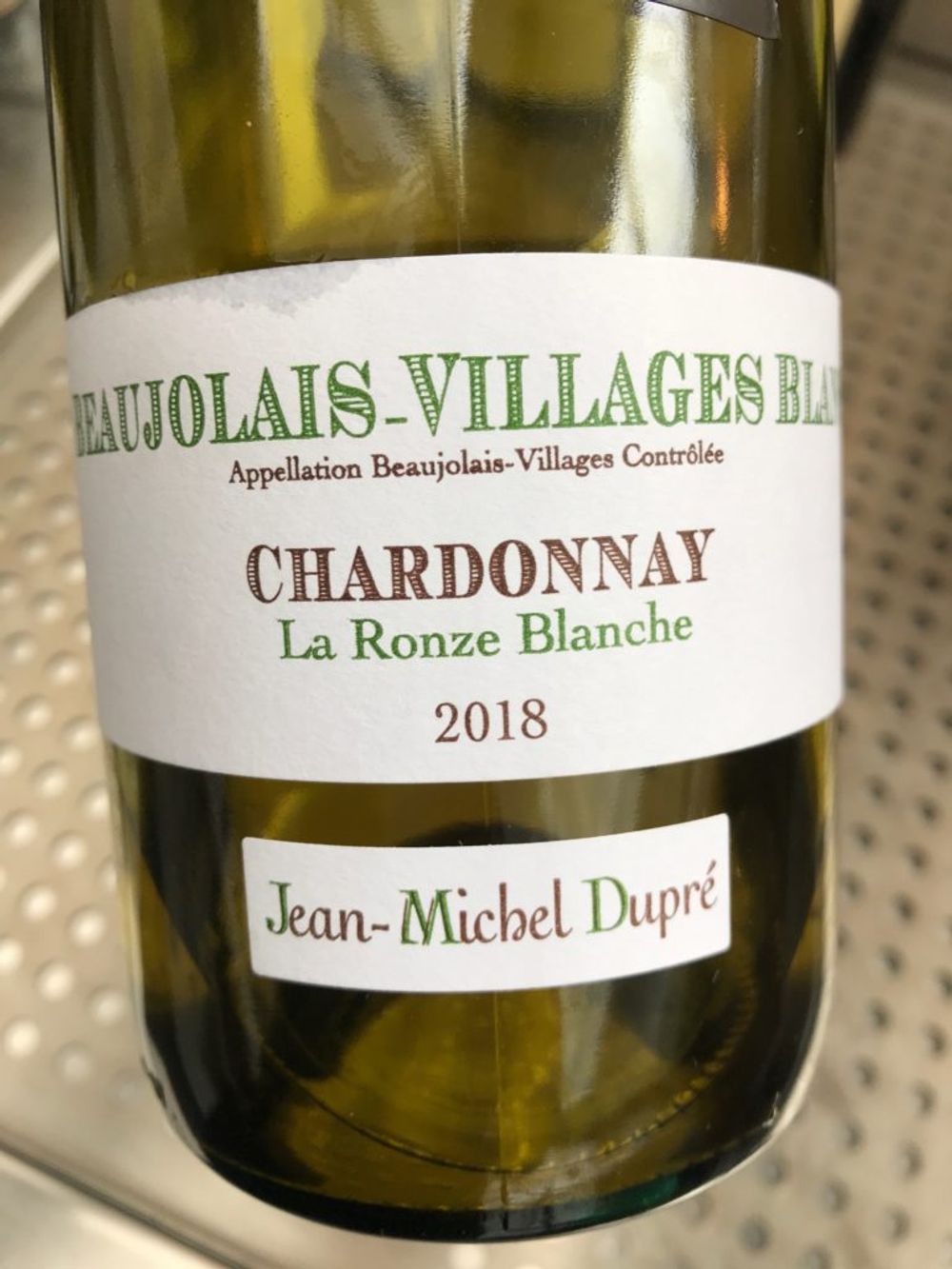
La Ronze Blanche, Beaujolais Villages Blanc, Domaine Jean-Michel Dupré, 2018
98% of Beaujolais wines are red with just 2% Chardonnay which, like the Rosé is one of their best-kept secrets. They do traditional vinification in steel but this has seen some wood with 33% vinified in second-fill barrels. The result is a lovely balance between apple blossom and poached pear on the nose, and a lovely weight and roundness from the malo on the palate. Great texture too. (Not in UK)
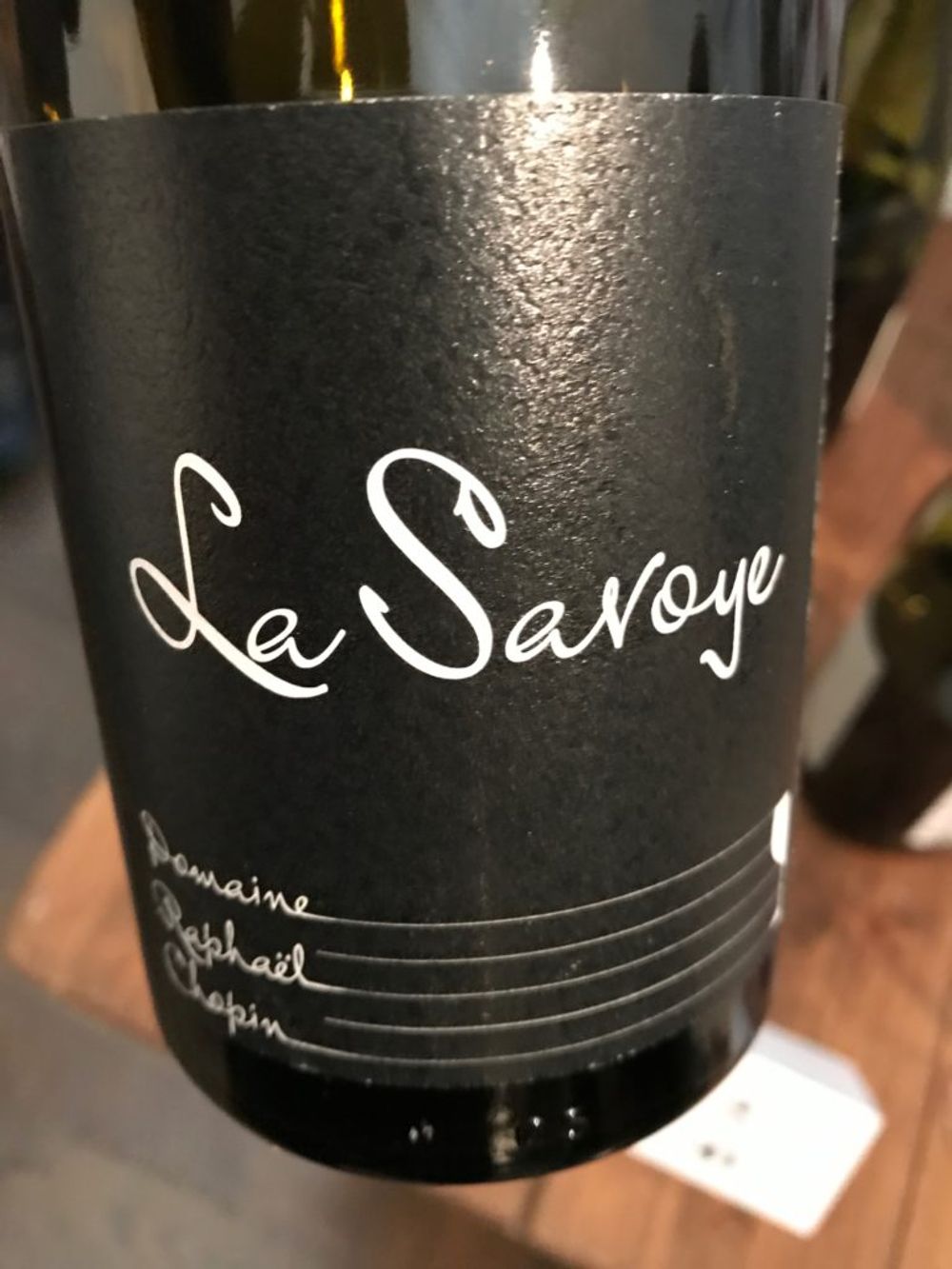
La Savoye, Domaine Raphaël Chopin, Beaujolais Villages, 2018
All of Chopin’s wines have a real energy about them – you can almost taste the crushed blue stones in this vibrant, highly-textured crowd pleaser. Strawberries, raspberries and currants on the nose, bit of blueberry crunch in the tannins. Great balance – but 14.5% ABV would you believe. I don’t know where he puts the alcohol cause you can’t taste it. Silly price £15.60 RRP. Where else can you get this value? (ABS Wine Agencies)
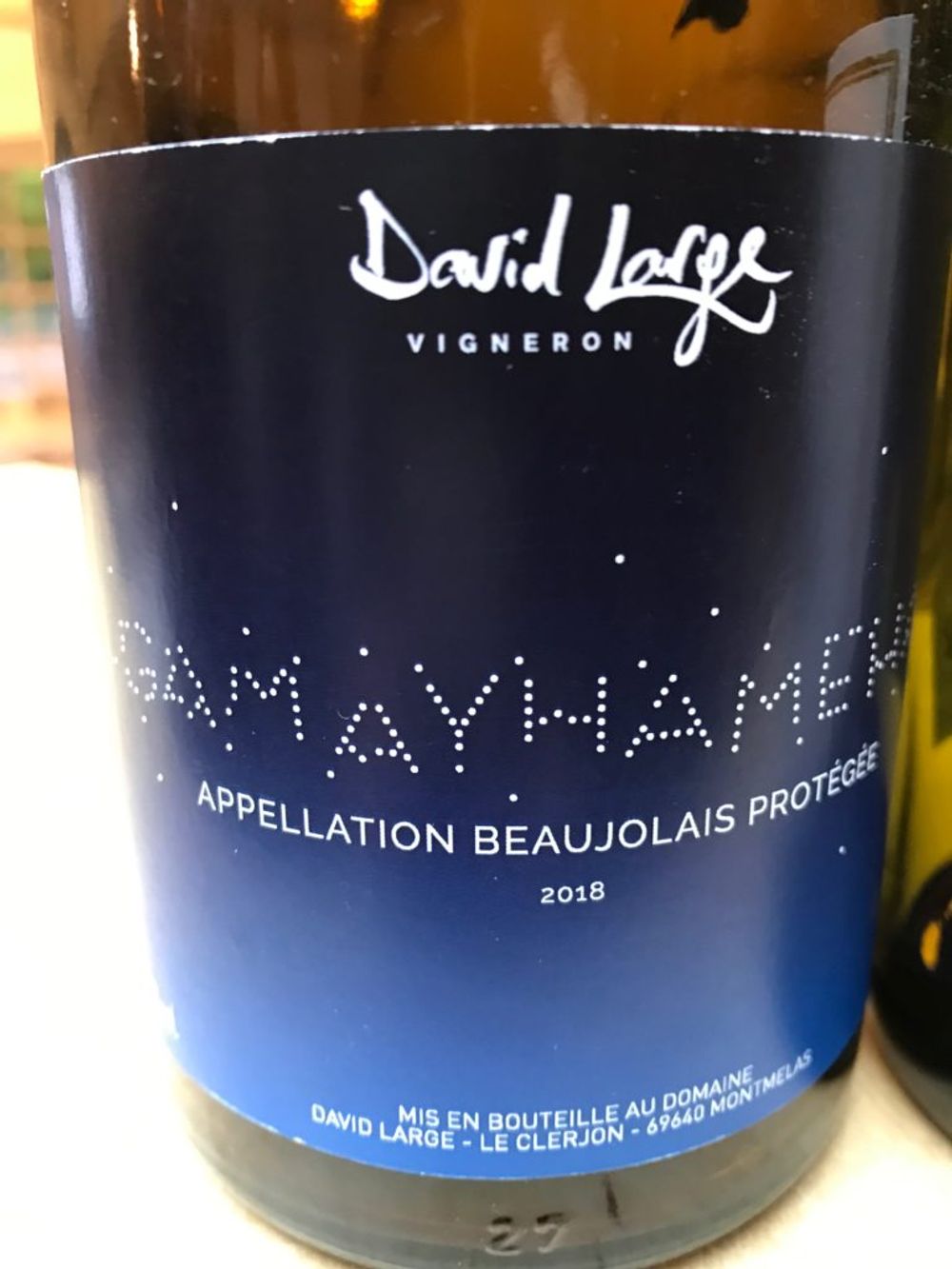
Gamayhameha, Beaujolais, David Large, 2018
Quite de rigeur in French wine bars, apparently, David Large’s wines haven’t got a UK importer yet although that will change shortly I would predict. 11-days whole bunch maceration and native yeasts give this wine considerable, stony, mineral texture. Smells natural in a good, interesting way. The name of the wine is a play on words with Kamehameha, the founder and first rule of Hawaii. (Not in UK)
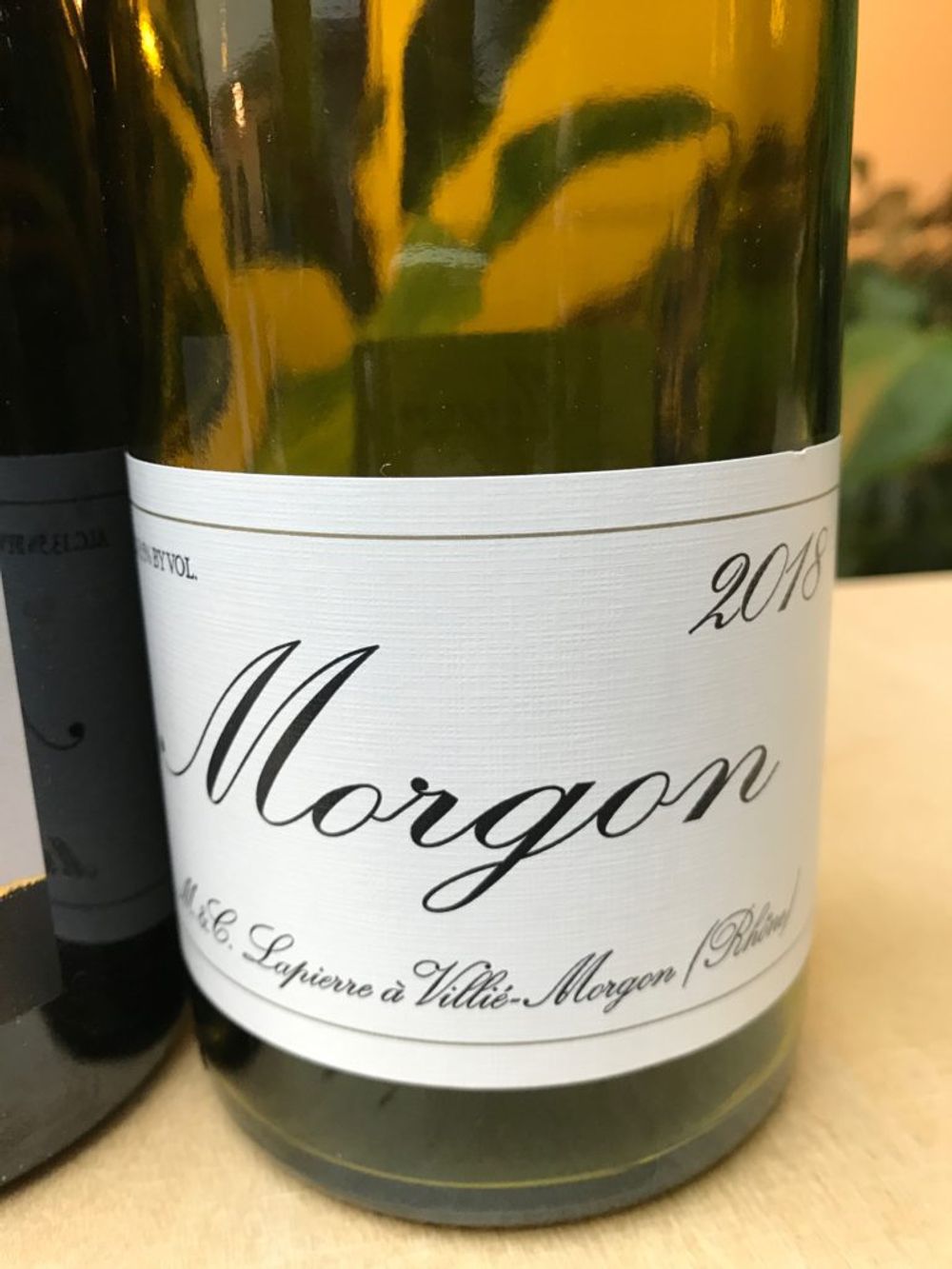
Tradition, Domaine Lapierre, Morgon, 2018
As the name of this cuvée ‘says on the tin’ this is real traditional Morgon – semi-carbonic maceration for 10-21 days, no sulphur and aged in small wooden tuns for nine months. The wine literally smells of rocks and earth and black cherries, the palate has a twist of red liquorice in there as well. Sensational and one of the wines of the vintage make no mistake (Bibendum).
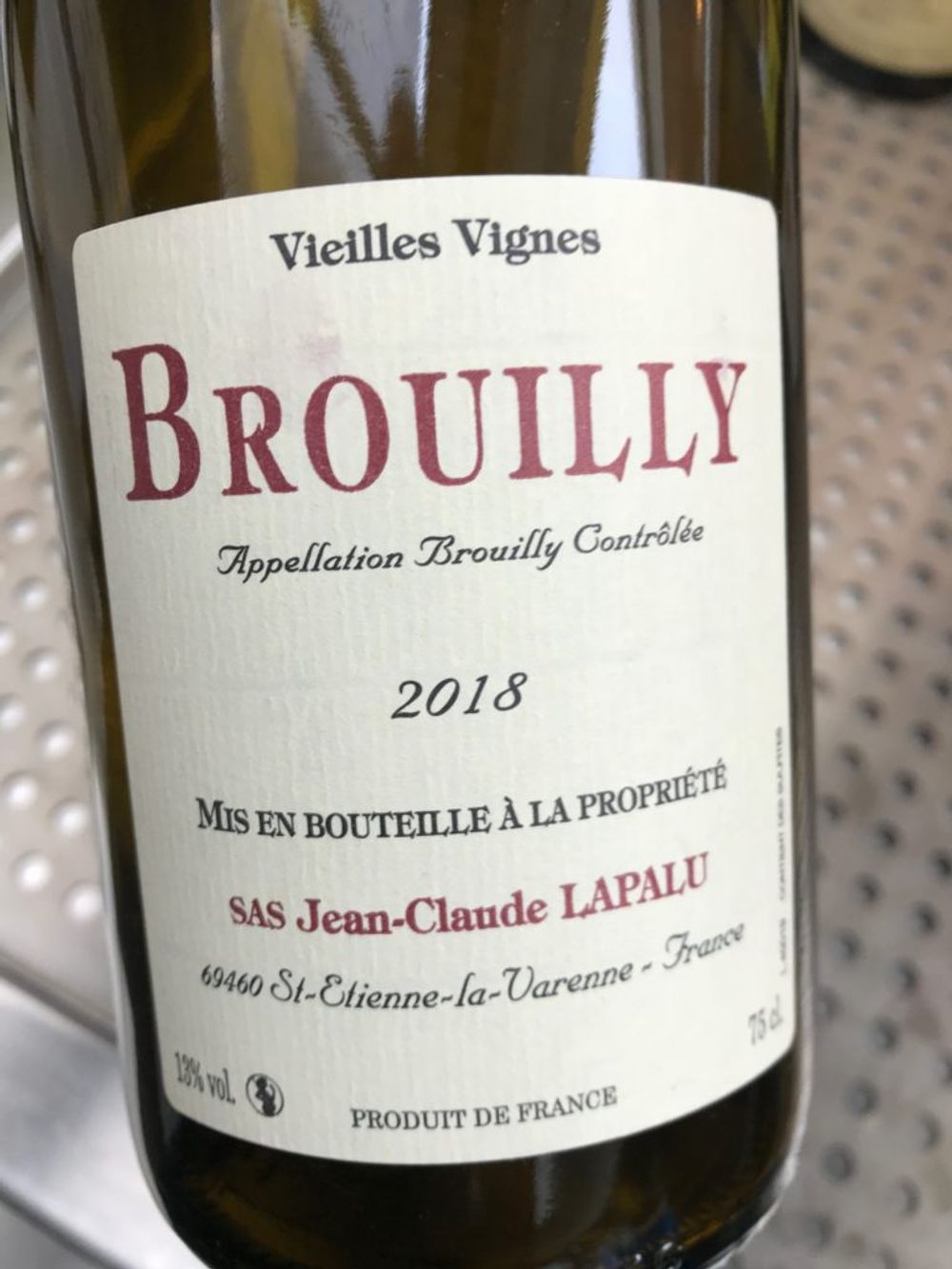
Vieilles Vignes, Jean-Claude Lapalu, Brouilly, 2018
Made with fruit from 60-80 year old vines grown bio-dynamically on South-East-facing granitic soils, this wine kept changing in the glass almost as if it didn’t want to be tied down. The nose had a herbal element, white cherry and a cough drop, although the latter disappeared. The palate has a linear thread of citrusy acidity that helps its balance and gives it a gorgeous, mouth-watering juicy quality. Soft tannins, river stone texture, complex and concentrated, but fresh. (Les Caves de Pyrene)
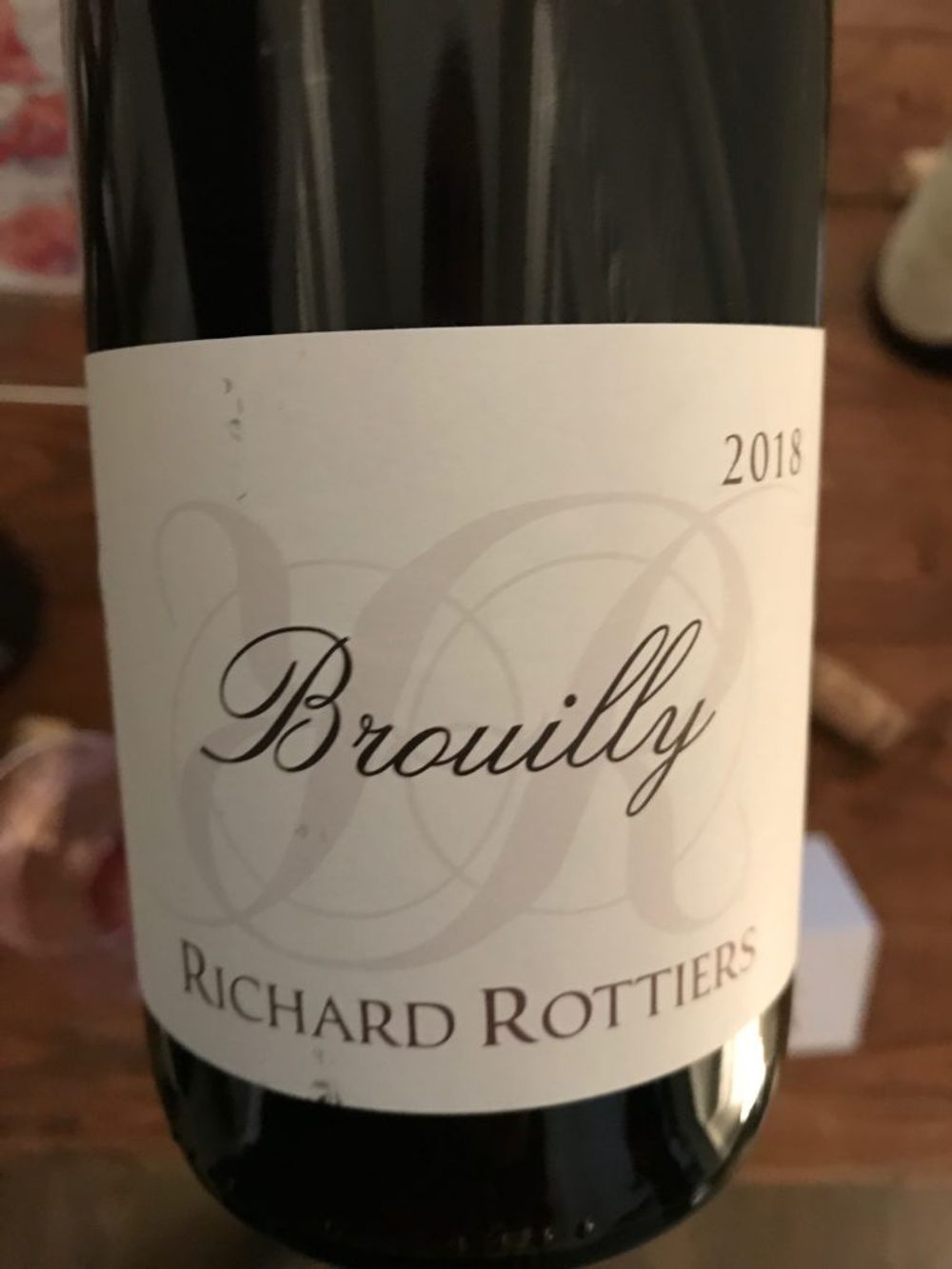
Brouilly, Richard Rottiers, 2018
Rottiers is a name to watch both in Moulin a Vent where his winery is based and also in Chablis where he has inherited a sizeable estate. These wines were tasting very punchy out of the barrel in October last year but they have settled down now and seem less liable to pick a fight. Semi-carbonic maceration of whole clusters, great terroir, judicious winemaking – this is light, fragrant, elegant with a real vibrant texture. Very nice. (ABS Wine Agencies)
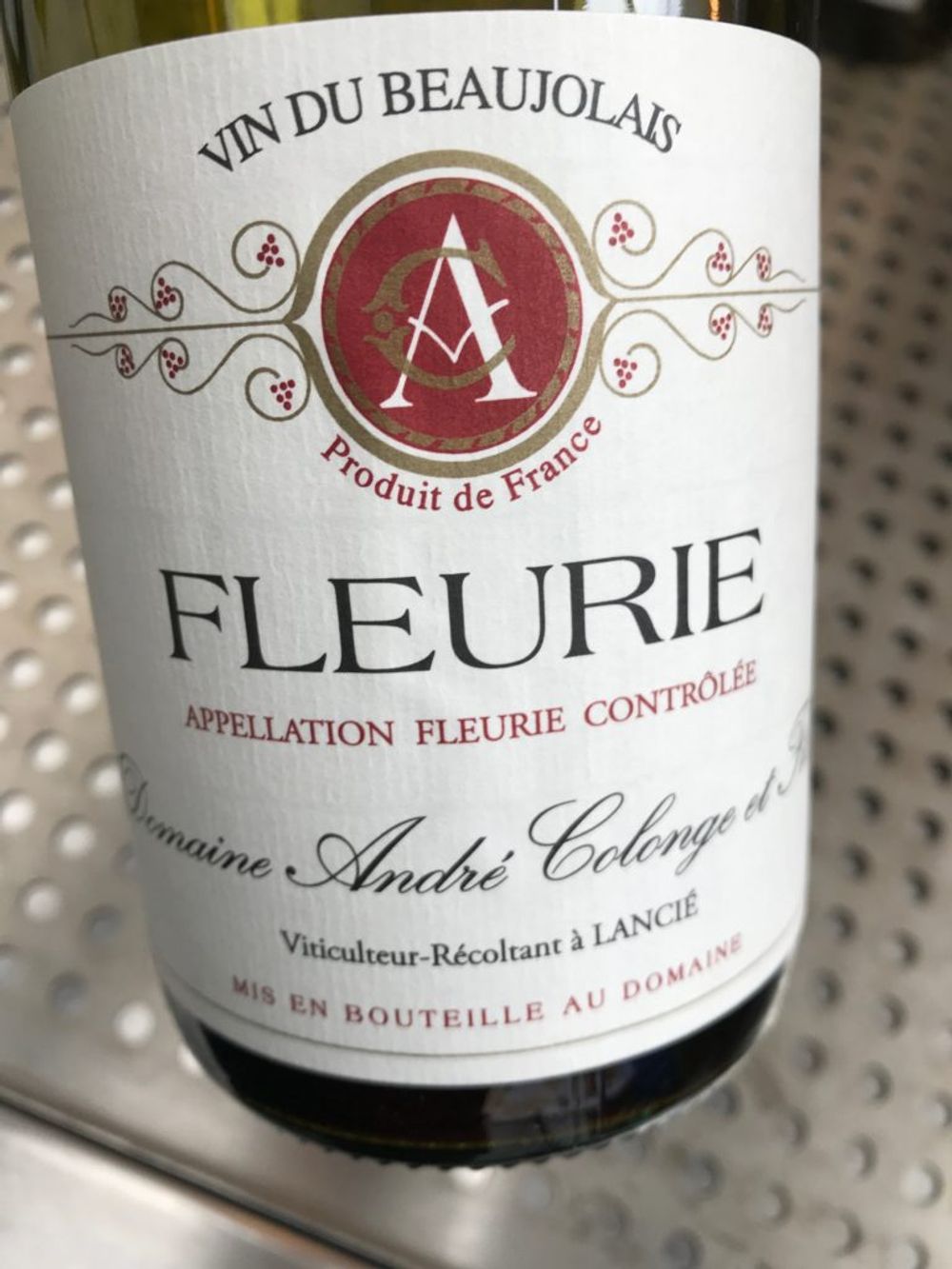
Fleurie, Domaine André Colonge et fils, 2018
Made from fruit grown on 60 year old vines, this Fleurie has a savoury, peppery quality on the nose and palate that is reminiscent of some Northern Rhône wines. It has been prodigiously sorted and then had 12-15 days semi-carbonic maceration, ageing in steel and concrete tanks on fine lees. It’s a pretty wine, light and fruity, a real stoniness to the texture and an attractive blood orange skin hit on the finish. (Thorman Hunt).
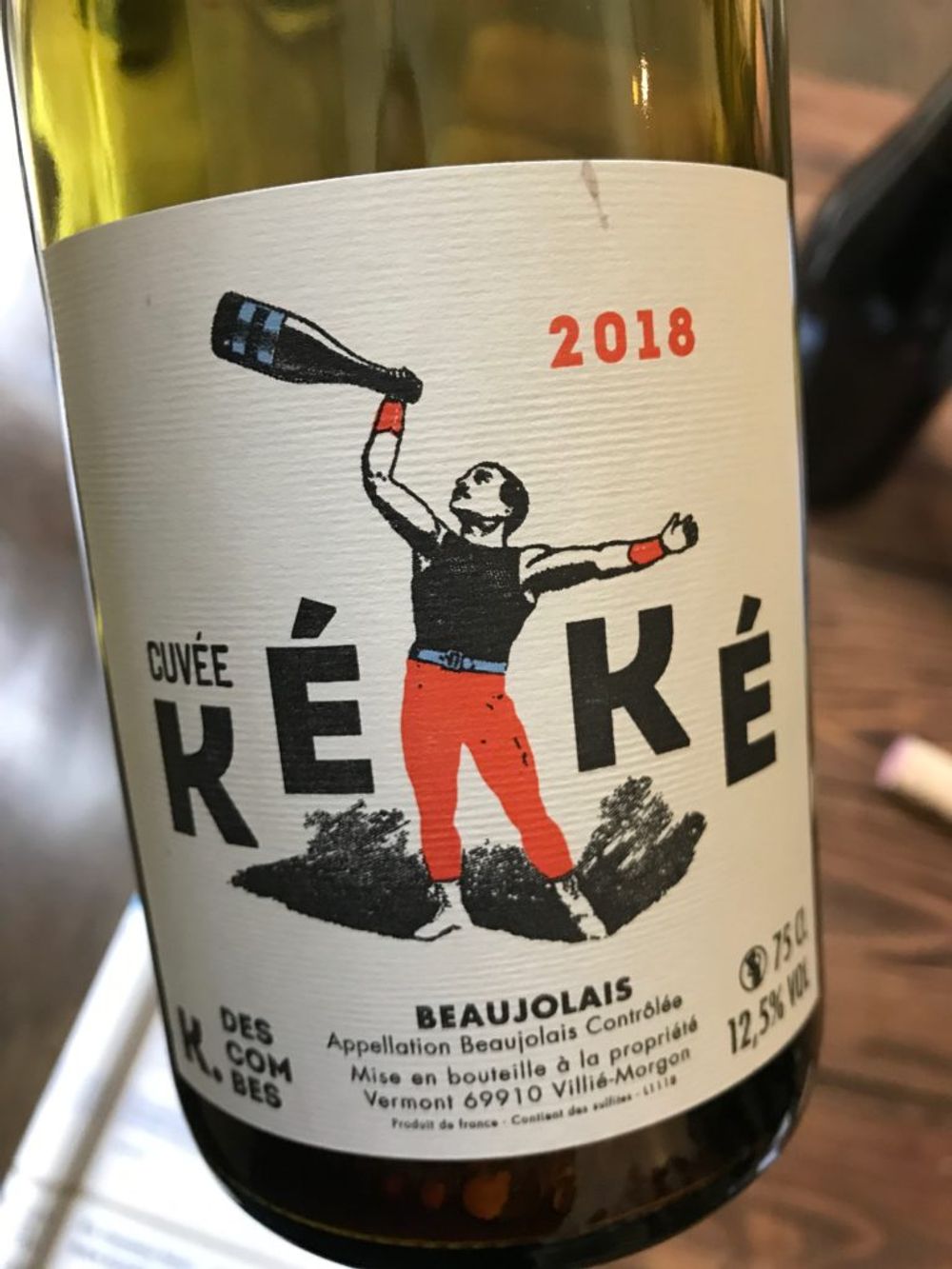
Cuvée Kéké, Beaujolais, Kewin Descombes, 2018
Son of George Descombes, this cuvée (Kewin’s nickname) is from a small, rented organic vineyard. The wine is spontaneously fermented with indigenous yeasts, no oak and no malo. Spicy, black fruit, liquorice, great texture, energetic and to be drunk as young as possible, preferably with some saucisson. Honest, direct and straight to the point. (Red Squirrel)
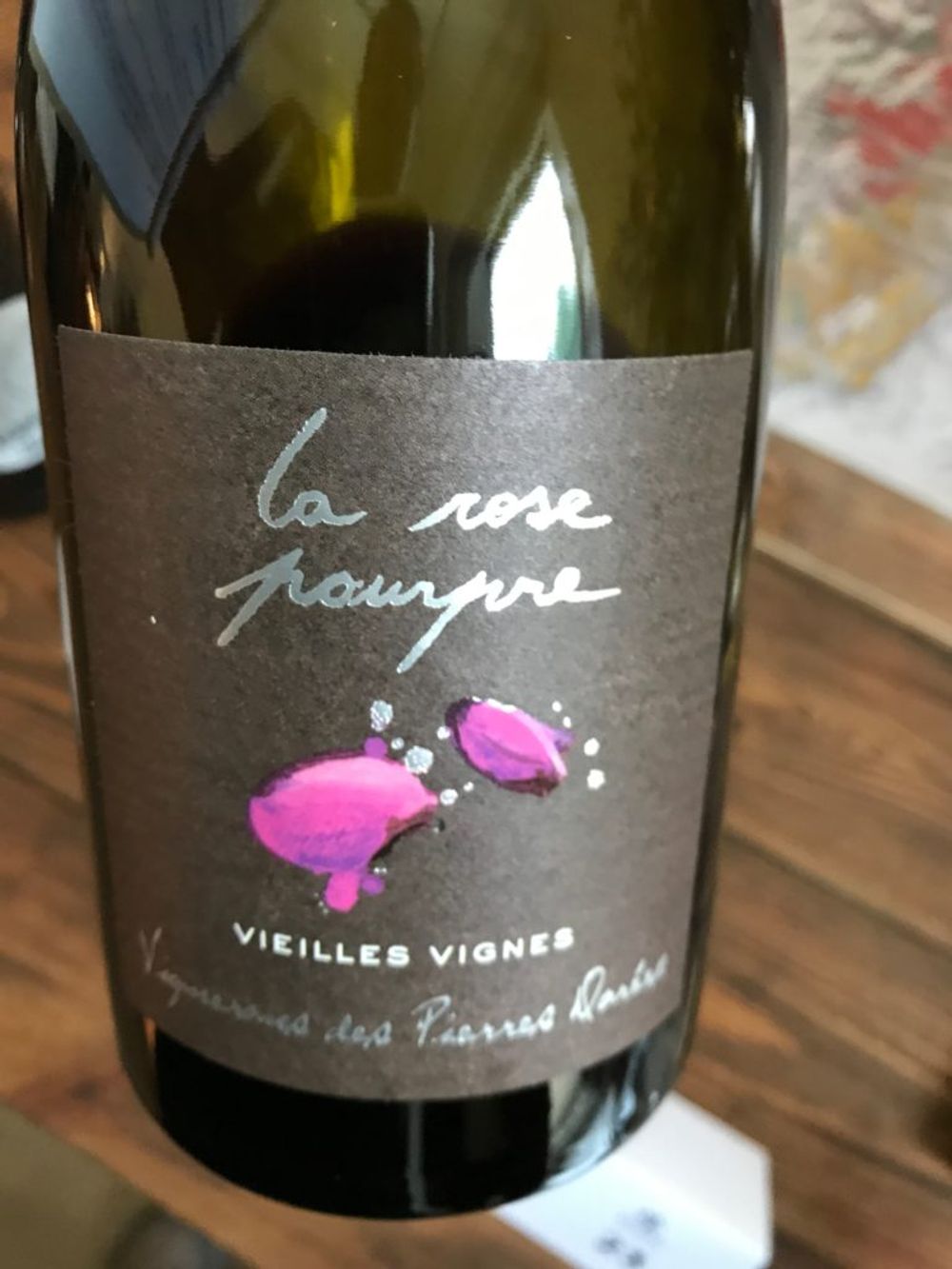
La Rose Pourpre, Beaujolais, Vignerons des Pierres Dorées, 2018
Eight days semi-carbonic maceration, low temperature fermentation. Juicy, light, unpretentious, great texture, delicious. What more to say? (Matthew Clark)




























